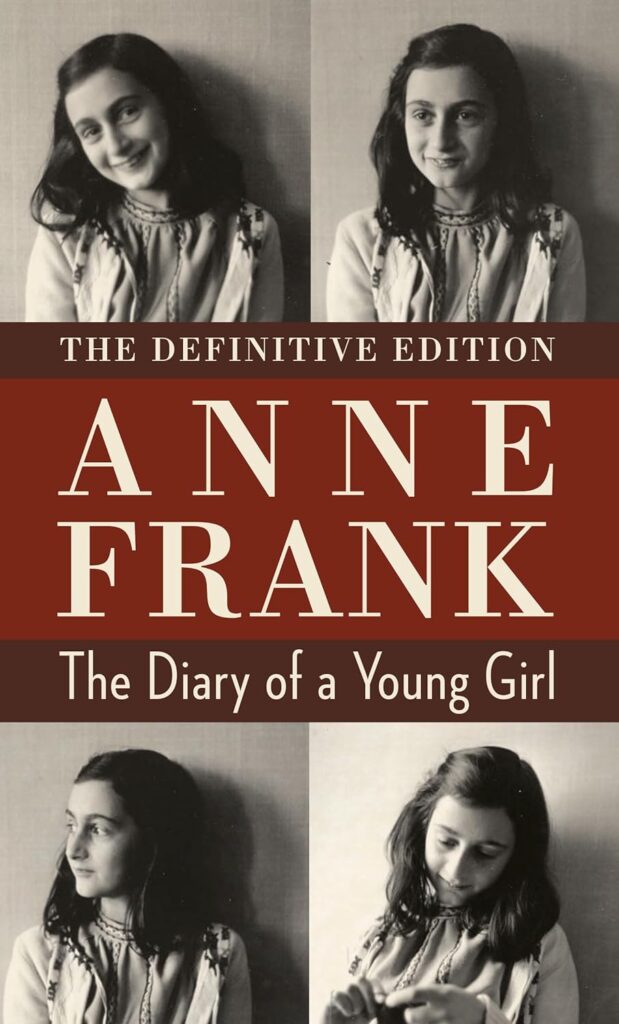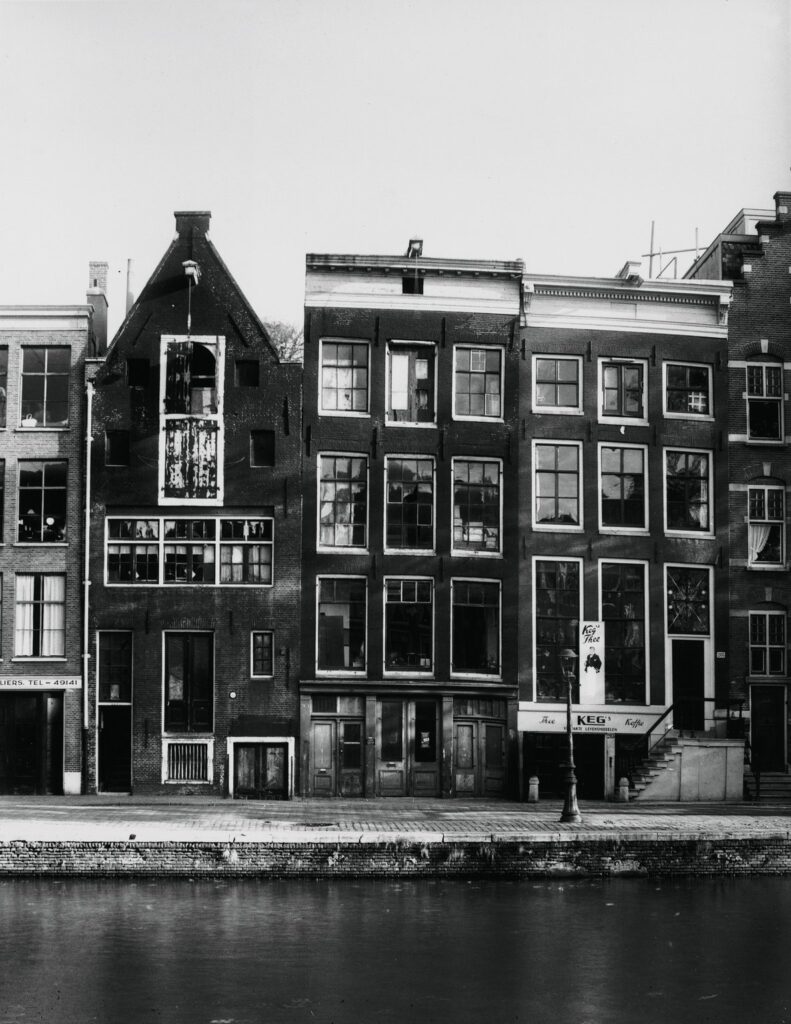The Diary of a Young Girl: The Definitive Edition, commonly referred to as The Diary of Anne Frank, is a poignant writing of a Dutch Jewish girl while she and her family were in hiding during the Nazi occupation of the Netherlands.
The story begins with Anne’s thirteenth birthday. The diary was written like letters to a dear friend she calls Kitty. Anne describes in detail all the restrictions forced upon Jews: they couldn’t attend public places of recreation, they could only shop during a brief time at the end of the day, they had to turn in their bicycles, they couldn’t ride in cars (even their own), could frequent only Jewish-owned barbershops and beauty parlors, could not attend public schools, etc. Every Jew had to wear a conspicuous yellow star.
Because of the severe restrictions in Frankfurt, Anne’s family—her father, mother, and sister, who was three years older—moved to Amsterdam in 1933. Anne’s father owned a pectin processing company. When Germany occupied Amsterdam, being a Jew, he could no longer own a business. To avoid the Holocaust, they quickly prepared a hiding place in a building they called the Annex, her father’s former place of business. The building’s upper floors grew narrower toward the tip of the building. They lived in cramped quarters on the top three floors. They moved into the Annex in 1942. Soon another family of three joined them, and then a single man, a dentist. Eight people in the cramped space was challenging. Their beds were make-shift: Anne’s bed was a sofa extended by chairs to fit her body. During the day they had to be quiet so those working on the lower floors would not hear them. They had to cover the windows, avoid using lights at night, and dispose of garbage during the night when they couldn’t be observed.
The peaked building where the Frank family lived
They did have outside help who brought food and reading material to them, but the whole country was in distress and food was often inadequate to sustain a healthy diet.
Some of Anne’s writing was typical of a thirteen and fourteen year-old girl, but much of it was far beyond her years, especially by American standards. She studied French, Latin, English, German, and Dutch languages, geometry, algebra, history, geography, art history, mythology, biology, and Bible history. She was a precocious girl and saw humor in much of her surroundings; yet complained of the many restrictions.
Anne writes of typical teen angst concerns: she didn’t get along with her mother much of the time, but she adored her father. Anne and her older sister were not close. The family that lived with them had a son, 16, and he and Anne became friends.
The diary ends abruptly when the family was captured in August, 1944. The edition I read furnished pictures of the building where the families lived, and a brief history of the individuals involved.
I’d heard about this book for years and am so thankful I’ve had the opportunity to read it. Anne was an exceptional girl, though typical in many ways. It’s hard to imagine the hardships Jews have endured, and how those atrocities could be justified. I recommend this book to adults and teens



